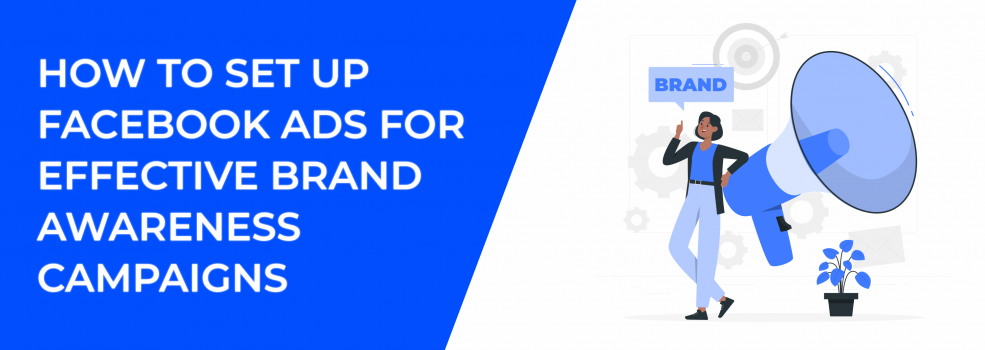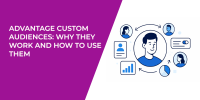If you want people to recognize your brand, Facebook ads can be one of the most powerful tools in your digital marketing toolkit. But running an effective brand awareness campaign isn’t as simple as hitting “boost” on a post or choosing a flashy image.
It takes strategy. Clear goals. And smart execution.
This guide walks you through how to set up Facebook ads that actually build awareness, not just burn budget.
1. Choose the Right Objective for Brand Awareness
When setting up your campaign in Meta Ads Manager, the first and most important step is selecting the right campaign objective. Your choice here tells Meta what outcome to optimize for.
For building awareness, choose the Awareness objective.
This objective is designed to help you reach people most likely to remember your brand. Meta uses predicted ad recall (how likely someone is to remember your ad later) to optimize delivery.
It’s a great choice if you want to:
-
Introduce your brand to new audiences,
-
Build long-term recognition,
-
Stay top-of-mind during a product launch or seasonal push.
It's best for brand awareness, video views, and broad exposure.
You can also consider the Engagement objective in certain cases. If your creative is highly interactive — like a video that encourages shares, or a post that sparks comments — the Engagement objective might help drive more visibility through that engagement. Meta will prioritize delivery to users most likely to interact.
Strategy tip: if you’re running a campaign that relies on video storytelling or emotional impact, start with Awareness, then retarget engagers using Engagement or Sales objectives later.
Pro tip: after 7–10 days, review your Estimated Ad Recall Lift, Cost per 1,000 Impressions (CPM), and Video Watch Time to evaluate if your awareness campaign is performing well.
If you're still unsure which campaign type aligns with your broader funnel, How to Set Up Performance-Driven Facebook Campaign Objectives walks you through each option in detail — especially helpful for balancing short-term and long-term goals.
2. Build Creative That Gets Remembered
People scroll fast, so you have about 2 seconds to grab attention. Your ad creative needs to be visually appealing, clearly branded, and emotionally engaging.
Key creative strategies:
-
Use bold, brand-consistent visuals: your logo, colors, and fonts should be visible and cohesive.
-
Short, memorable messaging: keep copy tight. Use a strong hook. Focus on one idea.
-
Show, don’t tell: use real photos, customer moments, or lifestyle imagery instead of generic stock visuals.
-
Include subtle brand elements: watermark your video, use branded stickers, or reinforce your logo throughout.
For example, if you’re a new skincare brand targeting women 25–40, use a short 10-second video showing a customer applying your product, smiling confidently in the mirror, with upbeat music and a tagline like: “Glow Naturally. Feel Good Every Day.”
Test tip: run different ad versions — a product close-up, a behind-the-scenes video, and a lifestyle photo — and track which one drives more engagement and recall.
3. Smart Targeting Is Non-Negotiable
One of the biggest myths in brand awareness advertising is that broad equals lazy. The truth? When used correctly, broad targeting can be a strategic advantage especially when paired with Facebook’s machine learning tools.
Strategy 1: Use Meta Advantage+ Audience Targeting
Meta’s Advantage+ audience targeting helps advertisers reach high-quality users beyond traditional interest or demographic filters. It allows the algorithm to find people who are statistically more likely to respond to your ad — even if they weren’t part of your original targeting.
For brand awareness, this can be a game-changer. You’re giving Meta the flexibility to expand reach and optimize for recall.
How to use it: when setting up your ad set, enable Advantage+ Audience. You can still provide a suggested audience (like women aged 25–45 interested in clean beauty), but Meta will deliver your ad beyond those suggestions if it thinks it can get better results.
Tip: if your goal is wide exposure with minimal cost per impression, test one ad set with only Advantage+ targeting and another with manual targeting. Compare CPM, reach, and engagement.
Want to go deeper on how Advantage+ works and when to use it? Unlock Meta Advantage+: The Smarter Way to Boost Your Facebook Ads breaks down everything you need to know — including setup tips and real use cases.Strategy 2: Create Lookalike Audiences
While you don’t need to retarget existing customers for awareness, you can use data from them to find similar users. A 1% lookalike audience based on people who’ve engaged with your Instagram page or made a past purchase can help Facebook find new users who are more likely to recognize and remember your brand.
Pair lookalikes with Advantage+ to give Meta even more flexibility to optimize delivery.
Strategy 3: Layer Interests Thoughtfully
If you’re not ready to go fully broad, you can still use interest-based targeting — just make it specific.
Let’s say you’re a plant-based snack company. Instead of targeting everyone interested in “vegan food,” narrow it to people aged 25–40 in urban areas who like “vegan meal prep,” “Whole Foods,” and “fitness influencers.” Now you’re talking to a niche that’s far more likely to care about your product.
Actionable tip: run 2–3 ad sets side by side — one with Advantage+ targeting only, one with a 1% lookalike, and one with layered interests. Let them run for 5–7 days, then shift your budget toward the top performer.
4. Budgeting and Frequency: Keep it Sustainable
Brand awareness campaigns work best over time. You’re not chasing conversions — you’re planting seeds.
Recommended setup:
Budget: start with at least $10–$20/day for local or niche targeting. Scale based on results.
Duration: run for at least 2–3 weeks. Brand recall takes multiple exposures.
Frequency: aim for 1.5 to 3 impressions per person per week. Any higher and people may tune out.
Watch out: if your ad frequency rises above 4 and engagement drops, it’s time to refresh your creative or expand your audience.
Curious how frequency capping can reduce ad fatigue and protect your budget? How Frequency Capping Helps Beat Facebook Ad Fatigue explains how to use this setting effectively.5. Optimize for Memory, Not Just Metrics
The true goal of brand awareness is to make people remember your brand later — not necessarily click today.
What to track:
Estimated Ad Recall Lift (in Facebook Ads Manager).
Video views (3s, 15s, 95%).
Page follows or likes.
Branded search terms (in Google Analytics or Search Console).
Use these signals to see if awareness is growing over time. Don’t obsess over CTR or conversions just yet — those belong in your retargeting phase.
For example, you can follow this strategy:
Week 1–3: brand Awareness campaign (wide audience, engaging creative).
Week 4–6: retarget people who viewed your video or engaged with your ad using a traffic or conversions campaign.
This two-phase setup warms up your audience before presenting a CTA. It mirrors how real people build trust with brands — gradually.
6. Bonus Tips for Even Better Results
Once your campaign is up and running, there are a few small tweaks and tactics that can make a big difference — especially if you want to stretch your budget further and keep your audience engaged over time.
Here are a few proven strategies to help your brand awareness campaigns perform even better:
Use Instagram Stories & Reels: these placements often deliver lower CPMs and higher engagement, especially among younger, mobile-first users.
A/B test headlines and hooks: the first 5 words are critical. Try variations like: “Struggling with dry skin?” ,“The natural skincare brand loved by NYC women”, etc.
Pin a post with your ad creative to your Facebook or Instagram profile: this reinforces your message for anyone who clicks through to check out your page.
Refresh creative every 3–4 weeks: even your best ads can go stale. Make slight changes to your visuals or copy to keep the content fresh and relevant.
These tweaks don’t require major overhauls — just a few adjustments that can significantly boost your campaign’s long-term performance. A little effort here can lead to stronger results, better engagement, and more lasting brand recognition.
And if your ads are hitting a performance wall, The Real Cost of Ad Fatigue and How to Prevent It is a must-read on rotating creatives and managing saturation.
Final Thoughts
Brand awareness campaigns are all about consistency, relevance, and staying top of mind. You're not trying to close the deal immediately — you're introducing your brand in a way that sticks.
The best campaigns don’t just get seen. They get remembered.
So as you set up your next Facebook ad, ask yourself: if someone sees this ad once, will they remember who we are a week later?
If the answer is yes, you’re on the right track.

